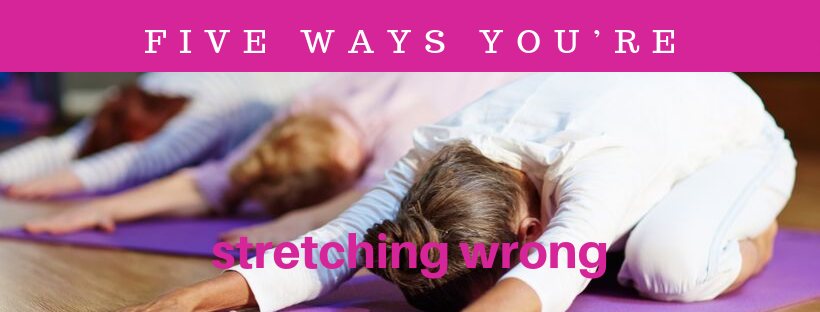Stretching and not getting much out of it? Maybe you’re injured and don’t know what stretch is best, or that there are different types of stretches. Read on to find out the different types of stretches and how to use them.
When should I stretch?
The best treatment in the first 24-72 hours after injury is R.I.C.E.R. (rest, ice, compression, elevation, and referral). Do not stretch at this time. Rest the injured area and apply ice for 10 minutes of every hour until the pain and swelling goes down.
Head to the emergency department if you think you may have a broken a bone or to your GP for further investigation.
When you have clearance from your GP you can start some rehabilitation over the next 10-24 days.
You should aim to regain your flexibility, strength, power, muscular endurance, balance and co-ordination over a period of 2 to 5 weeks after injury.
Once you have recovered from your injury, it’s time to strengthen the injured area ,improve flexibility and regain fitness.
When we talk about injury, this doesn’t always mean a serious injury. It could be anything from waking up with a stiff neck. Straining a muscle while picking something up. Or tearing a muscle during sport or exercise.
What types of stretches are there?
Static Stretching
Use static stretching while the body is at rest. Composed of various techniques, it gradually lengthens muscles to an elongated position (before the point of discomfort). Hold this stretch for 30 seconds.
Passive Stretching

Passive stretching is a form of static stretching where an external force holds back the limb to move it into the new position. This is in contrast to active stretching. Resistance can also be achieved through the force of gravity or a weight.
Active Stretching

Active stretching eliminates force and its adverse effects from stretching procedures. It stimulates and prepares muscles for use during exercise. Agonist refers to actively contracting muscle or muscles while their opposing muscles are termed antagonists.
PNF Stretching
Proprioceptive Neuromuscular Facilitation (PNF) is a more advanced form of flexibility training. It stretches and contracts the muscle group being targeted. PNF stretching is a very effective for injury rehabilitation.
Dynamic Stretching

Dynamic stretching is a form of stretching beneficial in sports utilizing momentum from form, and the momentum from static-active stretching strength, in an effort to propel the muscle into an extended range of motion not exceeding one’s static-passive stretching ability.
When should I use these stretches?
Use static and passive stretching soon after injury.
PNF stretching can be used as the muscles are regaining their strength. This is usually performed by your massage therapist.
Use dynamic and active stretches when the muscles are healthy and are strengthening. Don’t force a stretch, always use a controlled action.
How can I use the stretch?
- Focus on the muscles that are sore;
- Ease into the stretch, do not over stretch or force the muscle into position or into pain;
- Hold the stretch for 20-30 seconds;
- Breathe! Oxygen helps the muscle release;
- Stretch both sides. The other side is likely to be carrying the work of the sore muscle.


